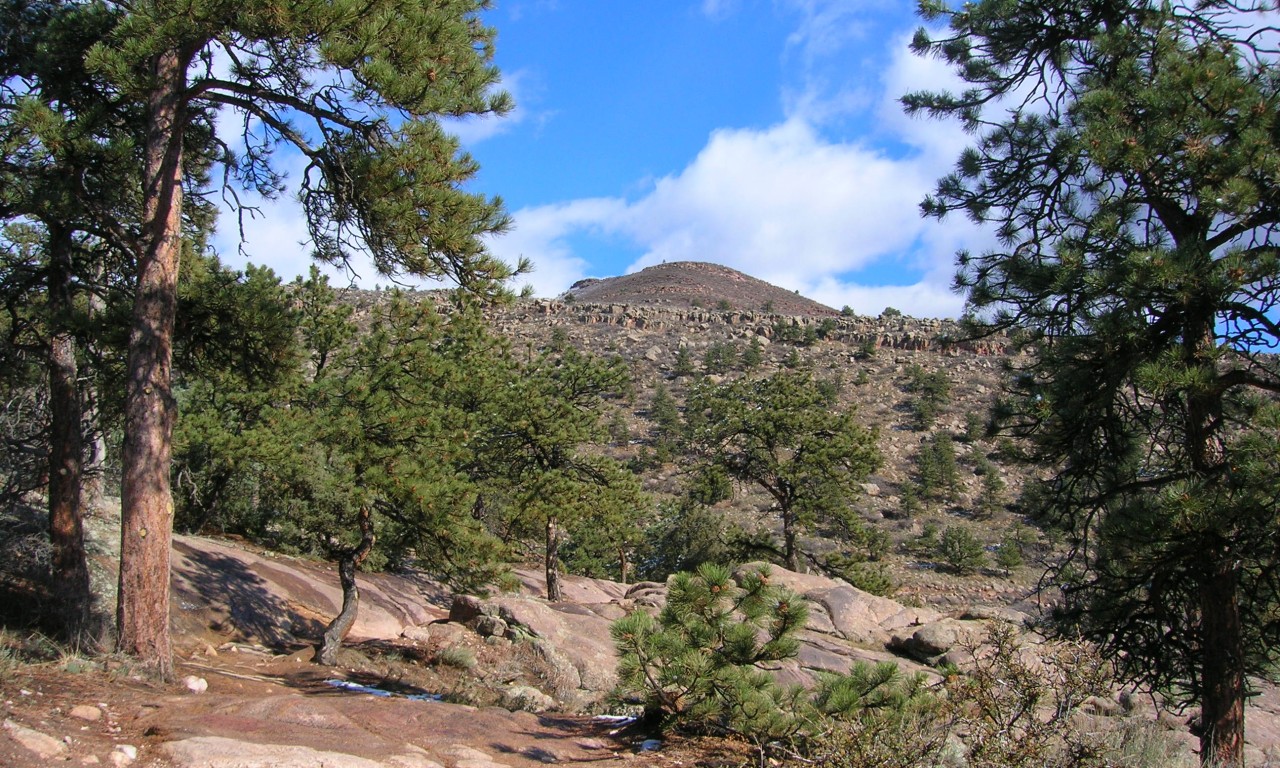When it was time to name trails at Hall Ranch Open Space, the department could not have picked two more appropriate names than bitterbrush and nighthawk, a plant and a bird that really define Hall Ranch.
The bitterbrush, a member of the rose family, is the dominant shrub at Hall Ranch. Its Latin name, Purshia tridentata, has historical and botanical origins. Purshia comes from Frederick Traugott Pursh, the German-American botanist that first described this plant in 1814. Tridentata refers to the three prominent indentations, or “teeth” at the end of the leaf (dens is Latin for tooth).
Bitterbrush – A Good Provider
A native of the Western mountains, the bitterbrush (also called antelope bitterbrush) is an important browse plant for livestock and wild ungulates such as deer and elkespecially in winter and spring. Its seeds are an important source of food for small animals and the plant provides cover for small animals and birds. According to the open space management plan, “Thickets dominated by mountain mahogany, skunkbrush and bitterbrush are rich breeding bird habitat and support a number of species of concern including scrub jay, bushtit, gray catbird, and others.”
In addition to providing food and shelter for wildlife, the bitterbrush also has human uses. It is an ideal plant for restoration projects, given its extensive taproot system. The long roots are an adaptation to desert environments, as are its leaves that are covered with dense hair on the underside to prevent water loss. Historically, Native Americans used all parts of the plant to treat respiratory and digestive ailments.
The Nighthawk: Not Really a Hawk
The common nighthawk (Chordeiles minor) is a confirmed breeder in the Hall Ranch area. The name nighthawk is actually a misnomer, since this bird is neither a hawk nor strictly nocturnal, but crepuscular, which means, active at dawn and dusk. The “hawk” part probably comes from the fact that its flying silhouette, with rather long, pointed wings, resembles that of falcons. This medium-sized bird, with speckled brownish feathers, makes for excellent camouflage during the day and a distinctive white band on its wings, very visible in flight.
Nighthawks feed almost exclusively on insects, hunting on the wing. Oftentimes flocks of these birds are spotted in urban areas, feeding on clouds of insects that are attracted to streetlamps, stadium lights, and other bright lights.
Many factors make the nighthawk worthy of having a trail named after it. To start, it has one of the longest migration routes of all North American birds, flying from South America, (primarily Argentina) to as far north as Greenland. In our area, it is one of the last species to reach its nesting grounds. Also, it does not build a nest, but lays eggs on the ground.
The bird’s most distinctive feature however, is the male’s courtship display. The male starts flying high, then dives for the ground. As he comes out of his dive (sometimes just a few yards from the ground) he flexes his wings downward. The air rushing across his wingtips makes a deep booming or whooshing sound, akin to having a race car zoom by. These dives may be directed at females, territorial intruders, and even people.
According to the resident ranger at Hall Ranch, nighthawks are a rather common sight in the park during the summer months. What better opportunity than taking a walk at sunrise or sunset and to look (and listen) for this fascinating bird?


